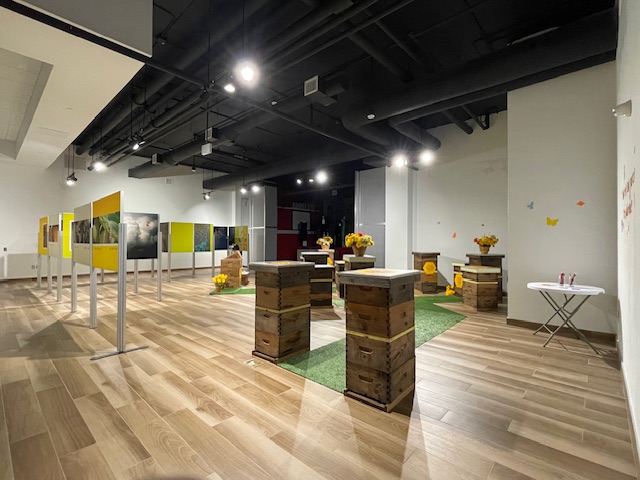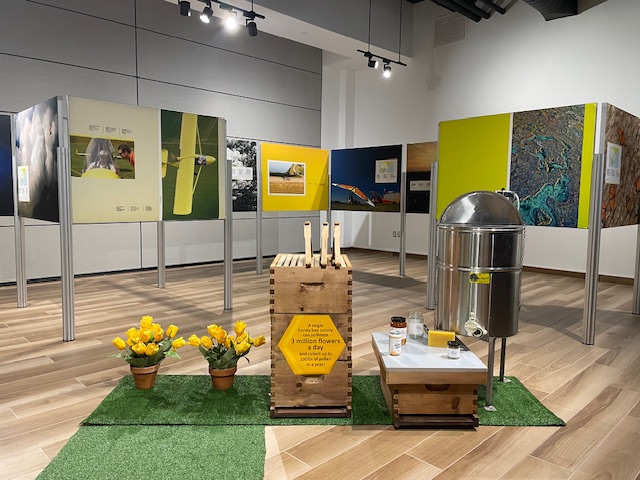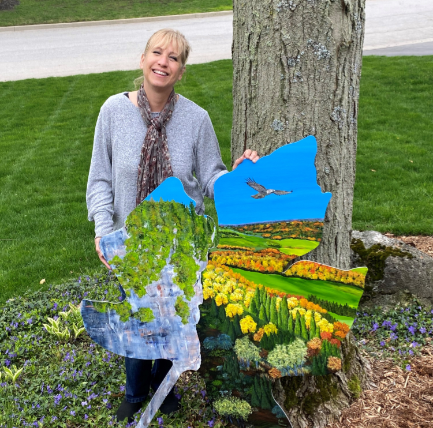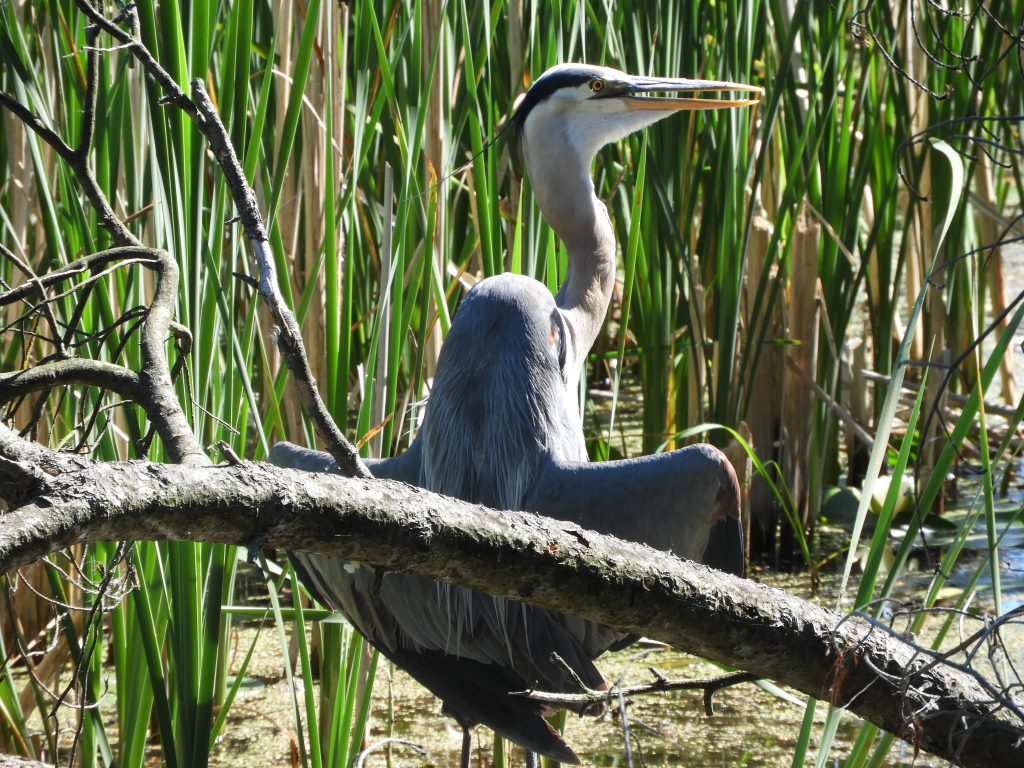By Emily R. Zarevich, Local Journalism Initiative Reporter
Butterflies are beautiful and colourful. Bees pester and sting. But were you aware that they could do so much more than look pretty and buzz around your ears? How would you feel learning that butterflies are powerhouse world travelers and bees are an indispensable, vital puzzle piece in our ecosystem? Joseph Brant Museum, located at 1240 North Shore Boulevard E., is giving you the chance to immerse yourself in those very facts this fall.
“Monarch and Bee” opened to the public on September 7, 2024. The exhibit is a tag-team effort between Canada Aviation and Space Museum and the Embassy of Mexico that has been (metaphorically) carried on the wings of insects to Burlington. Curated by Museums of Burlington Acting Curator Lynna Nguyen, this one-month exhibit is a valuable lesson on how nature effectively functions with or without human interference. An appropriate lesson as Burlington enters autumn, the season of the harvest and dramatic weather transition.
The first half of the exhibit, “On the Trail of the Monarch Butterfly,” exists as a testament to the power of vision and commitment. Francisco “Vico” Gutiérrez, a Mexican filmmaker and pilot, personally captured the standard progress of a monarch butterfly as it completes a migration from Montreal, Quebec, to the middle of Mexico.
Gutiérrez named his remarkable subject “Papalotzin,” the Aztec word for “small butterfly,” and conducted his mobile photoshoot over the course of seventy-two days. The math is undeniable. Using microphotographic images, aerial, and an ultralight stamped with a butterfly motif, Gutiérrez and “Papalotzin” flew over 6000 kilometres and totaled 90 hours of flight time, an incredible feat.
The second half of the exhibit is sticky-sweet. Bees are the reason we can bake cookies and cakes with honey and still enjoy mead, a centuries-old alcoholic beverage. Backed by Bees, a local bee yard located on 6214 Appleby Lane, has collaborated with the Museums of Burlington to educate the masses on the processes and importance of beekeeping. How do the bees pollinate our city flowers and turn their collective efforts into delicious, nectarous honey? There’s a whole outstanding process that you may not yet know.
Nguyen kindly spoke about her own vision while pairing up the monarch and the bee for their Joseph Brant House Museum debut.
“The ‘Monarch and Bee’ exhibition is a combination of two exhibits from two different institutions — Ingenium [Canada’s Museums of Science and Innovation] and Backed by Bees,” says Nguyen. “It is on display in our showcase gallery, which rotates travelling exhibitions every four to six months. We tried to find a common theme when bringing the two together, which was that they were both pollinators that help sustain our natural plant ecosystem. We want to highlight that we need to protect them so that everything involved in the ecosystem also benefits.”
Nguyen also expressed her hopes for the future of Museums of Burlington and its campaign to reconnect Burlington with nature. “We are always looking for opportunities to educate people about our ecosystem and beyond. One of our projects is the Heritage Garden project at Ireland House Museum, which is a joint collaboration with the horticulture therapy class at M.M. Robinson High School.”
That particular project has students learning how to grow their own vegetables; the results of their green-thumbed efforts are then donated to the Burlington Food Bank.
Explains Nguyen, “Depending on our travelling exhibition, in this case, pollinators, we also create school programs during that time for those wishing to learn more about it. There are always projects in the works!”
According to Nguyen, “Monarch and Bee” is “still collecting feedback from visitors,” so if you want to help Joseph Brant Museum continue its development, stop in the next time you’re downtown and educate yourself on all things with antennae. The exhibit is on until October 12, 2024.






